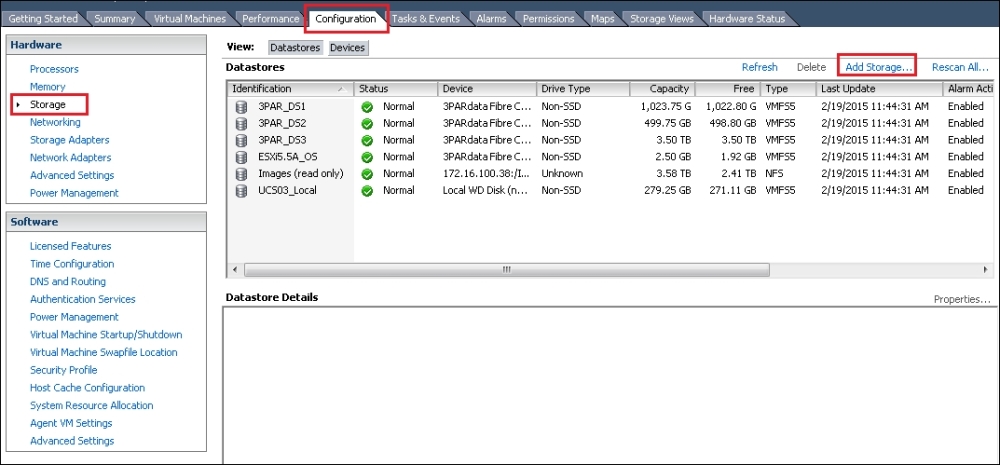When you create the data store in a vSphere host, the vSphere host mounts the data store with an existing signature or assigns a new signature. Each VMFS data store filesystem has a unique UUID. In this situation, you can specify VMFS by this option. During a disaster recovery plan, for example, VMware Site Recovery Manager, you need to mount the VMFS data store copy with its original UUID and the existing signature in the vSphere host on a secondary site. When you mount the VMFS data store copy at that site, the original VMFS data store is required to be offline at the primary site. Here is the procedure of specifying the data store with the existing signature:

Mastering VMware vSphere Storage
By :
Mastering VMware vSphere Storage
By:
Overview of this book
<p>vSphere Storage is one of the three main infrastructure components of a vSphere deployment (Compute, Storage, and Network).</p>
<p>Mastering VMware vSphere Storage begins with an insightful introduction to virtualization and creating your own virtual machines. We then talk about VMware vCenter Server and virtual machine management, as well as managing vSphere 5 using vSphere Management Assistant (vMA) and esxcli and vmware-cmd commands. We then swiftly move on to a very interesting topic, reviewing the vSphere performance and troubleshooting methodology. We then configure VM storage profiles, Storage DRS, and Storage I/O control. More significantly, we will troubleshoot and analyze storage using the VMware CLI and learn how to configure iSCSI storage.</p>
<p>By the end of the book, you will be able to identify useful information to make virtual machine and virtual data center design decisions.</p>
Table of Contents (21 chapters)
Mastering VMware vSphere Storage
Credits
About the Authors
About the Reviewers
www.PacktPub.com
Preface
 Free Chapter
Free Chapter
Getting Started with vSphere 5.x and vCenter 5.x
Getting Started with vSphere Management Assistant
Using the Virtual Machine Monitor
Storage Scalability
Optimizing Storage
vSphere Storage Configuration Settings
Analyzing vSphere Storage by CLI
Troubleshooting vSphere FC Storage
Troubleshooting vSphere iSCSI Storage
Troubleshooting vSphere NFS Storage
vSphere Storage Design
ESXi Host Design
Virtual Machine Design
vSphere Virtual Datacenter Design
Index
Customer Reviews


